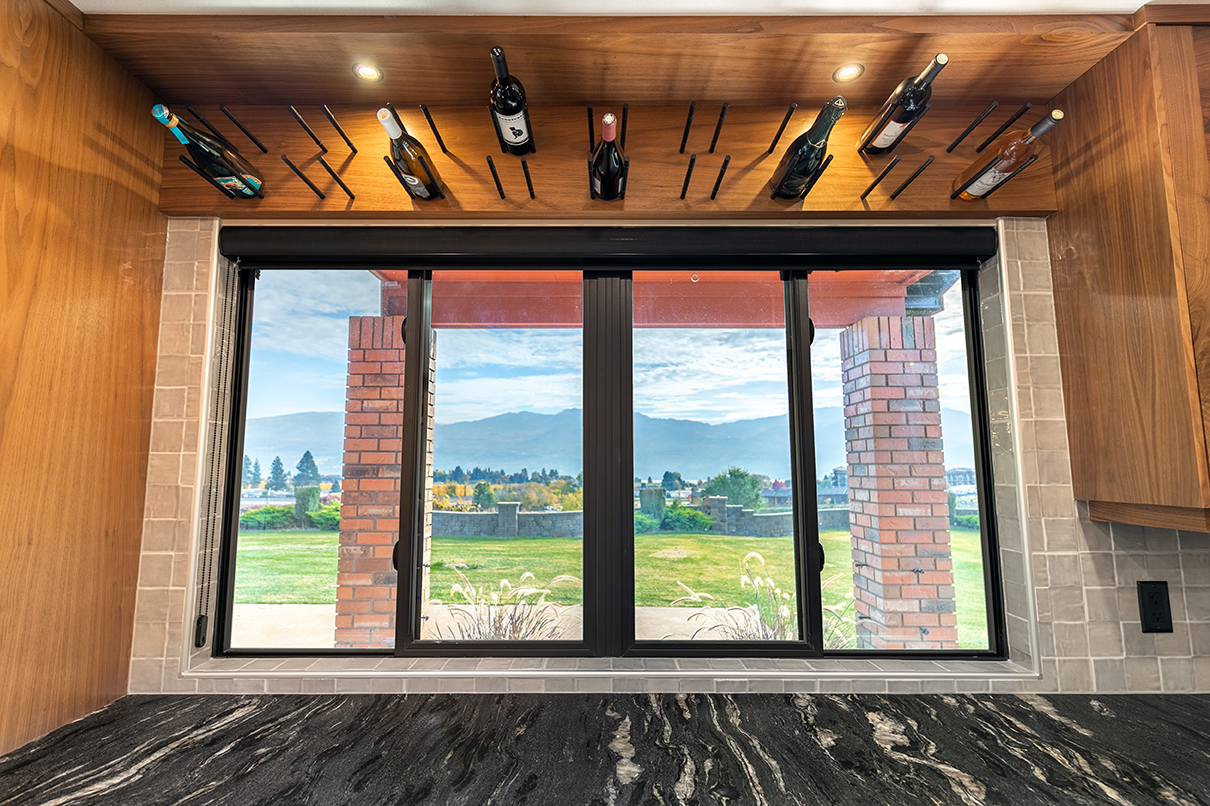By Dan Benoit, Partner, Alair Homes Kelowna
Nestled amidst the breathtaking landscapes of world-renowned National Parks, the Rockies and the Okanagan Valley are picturesque destinations for natural beauty and serene surroundings, making them prime locations for those seeking to build their dream home or vacation property.
However, with lush forests, pine beetle destruction, and dry climates, these destinations have become increasingly vulnerable to wildfires, especially during the summer months. Since 2019, overr 7,239 wildfires have run rampant in British Columbia alone. As such, ensuring that your home is equipped with fire-smart improvements is not just prudent but essential for protecting your property and loved ones.
The region faces an increased threat of wildfires due to a combination of factors including dense forests, dry vegetation, and hot, windy conditions during the summer. In recent years, the frequency and severity of wildfires have increased, underscoring the importance of proactive measures to mitigate risk. In recent weeks, fires have ravaged and claimed ownership of Jasper National Park, and last summer’s McDougall Creek Wildfire and damages made headlines worldwide.
Be Fire Smart
Fire Smart principles focus on creating defensible spaces around your home and implementing construction and landscaping practices that reduce the risk of fire damage. Here are five key steps you can take to make your home more resilient to wildfires:
Defensible Space: Clear vegetation and combustible materials from around your home, creating a buffer zone known as defensible space. This can include removing dead trees and plants, trimming branches, and maintaining a non-combustible zone immediately adjacent to your house. Consider non flammable ground cover like landscape rock to create a 1 meter band around your home and keep fences made of combustible material at least 5 feet from your home, fences can create a direct line to the house.
Exterior Material Selection: Choose fire-resistant materials for your roof and siding. Most homes that succumb to fire do so from embers and radiating heat. Roofing materials such as steel, asphalt shingles treated with fire retardant, or even clay have become popular choices for high risk areas. Siding choices can include fiber cement, stucco, brick and stone. Steel soffits are also helpful as the scorching temperatures of a wildfire can melt aluminum. Keeping your steel or copper gutters clean is also very important so embers can’t start fire in the dry debris built up in them.
Windows and Vents: Install ember-resistant screens on windows and vents to prevent embers from entering your home and igniting flammable materials inside. 3millimetre screening or ASTM fire rated vents should be standard. Metal products are recommended for vents and vent flashing, vinyl should be avoided if possible.
Landscaping: Use fire-resistant plants in your landscaping and maintain them regularly by keeping them well-watered and pruned. Create breaks in vegetation by spacing trees and shrubs apart and removing ladder fuels that allow fire to climb from the ground to the canopy. One often overlooked tool is the use of naturally fire resistant local plants. Using hearty native plants such as Kinnickinnick, shrubby cinquefoil and creeping Oregon, grape and arctic lupins create low maintenance areas that also provide seamless transition from a more natural environment to your landscaping.
Access and Water Supply: Ensure that your property is accessible to emergency vehicles and that you have larger water sources included in your landscape, such as a well or a swimming pool, make sure firefighters have access to it.
Consider A Sprinkler or Water Wall System: For residents in remote areas, or away from major infrastructure supports, sprinkler or water wall/curtain installations may be beneficial to support and protect your home independently. As homeowners in fire zones and fire prone areas, these systems offer protection from devastation, as well as peace of mind. If you are in the process of constructing a new home, consider adding sprinklers into your home internally (and into your landscaping as well). Monitor the fire activity in your community and consider adding these defense mechanisms for additional peace of mind.
Specific Considerations for Community Areas
There are some additional considerations to keep in mind when implementing fire-smart improvements that are more community minded but equally important and have the added by-product of stretching the sense of community and your part in it:
Community Preparedness: Work with your neighbors and local community organizations to develop wildfire preparedness plans and coordinate efforts to create defensible space and reduce fire risk at a broader scale including parks, trails and lanes.
Evacuation Planning: Familiarize yourself with evacuation routes and procedures, and have a plan in place for safely evacuating your home in the event of a wildfire. Discuss muster points with your neighbours and share plans. Know your insurance information, create a list of must-brings (like medications) for each member of your family in the event of an evacuation, and take photos of valuables and other insurable information to assist you in navigating future discussions with your insurance company.
Monitoring and Early Detection: Stay informed about wildfire activity in the area through local authorities and utilize tools such as fire weather forecasts and smoke detection sensors to monitor conditions and take pre-emptive action if necessary.
As residents of fire-prone zones in the Rockies and Bow Valley areas, safeguarding our homes and properties against the threat of wildfires is not just a matter of personal responsibility but a collective effort to protect our community and preserve the natural beauty of our surroundings. By implementing fire-smart home improvements and adopting proactive measures, we can reduce the risk of fire damage and ensure the safety and resilience of our homes for years to come.
We’re thinking of our friends and neighbors in Jasper. For those looking to support, we encourage you to make a financial donation to the Banff Canmore Foundation in support of evacuees and the Jasper rebuilding efforts.
